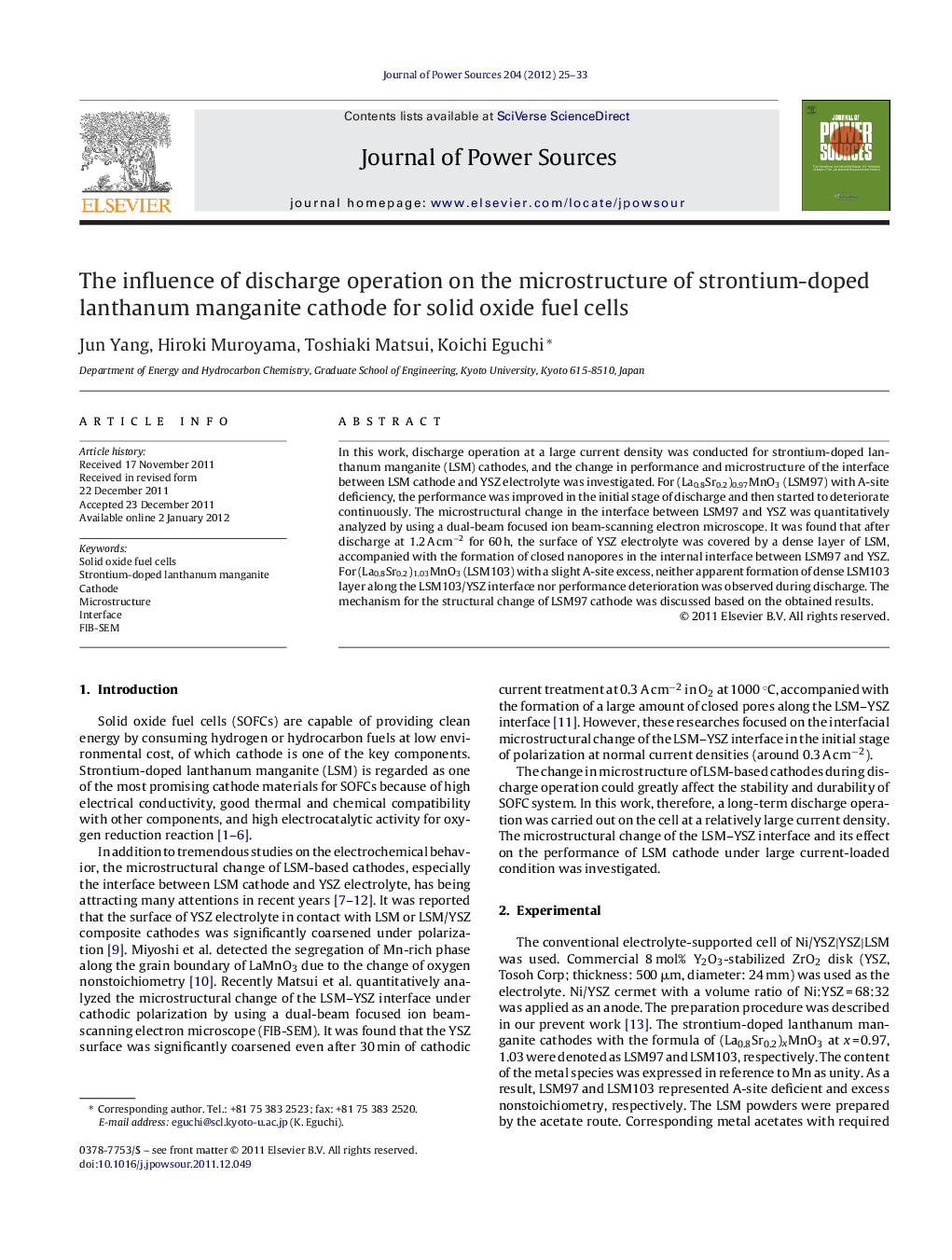| Article ID | Journal | Published Year | Pages | File Type |
|---|---|---|---|---|
| 1293123 | Journal of Power Sources | 2012 | 9 Pages |
In this work, discharge operation at a large current density was conducted for strontium-doped lanthanum manganite (LSM) cathodes, and the change in performance and microstructure of the interface between LSM cathode and YSZ electrolyte was investigated. For (La0.8Sr0.2)0.97MnO3 (LSM97) with A-site deficiency, the performance was improved in the initial stage of discharge and then started to deteriorate continuously. The microstructural change in the interface between LSM97 and YSZ was quantitatively analyzed by using a dual-beam focused ion beam-scanning electron microscope. It was found that after discharge at 1.2 A cm−2 for 60 h, the surface of YSZ electrolyte was covered by a dense layer of LSM, accompanied with the formation of closed nanopores in the internal interface between LSM97 and YSZ. For (La0.8Sr0.2)1.03MnO3 (LSM103) with a slight A-site excess, neither apparent formation of dense LSM103 layer along the LSM103/YSZ interface nor performance deterioration was observed during discharge. The mechanism for the structural change of LSM97 cathode was discussed based on the obtained results.
► Long-term stability of strontium-doped lanthanum manganite cathodes was evaluated. ► (La0.8Sr0.2)0.97MnO3 cathode was densified at the interface with electrolyte during discharge. ► The microstructural change in the LSM–YSZ interface was quantitatively evaluated. ► A-site nonstoichiometry affected the densification phenomenon significantly.
